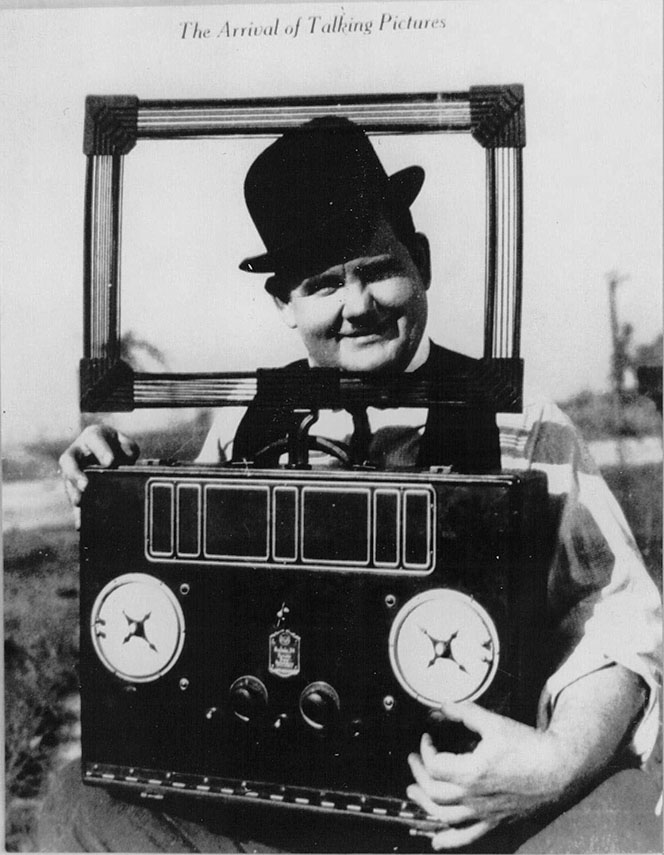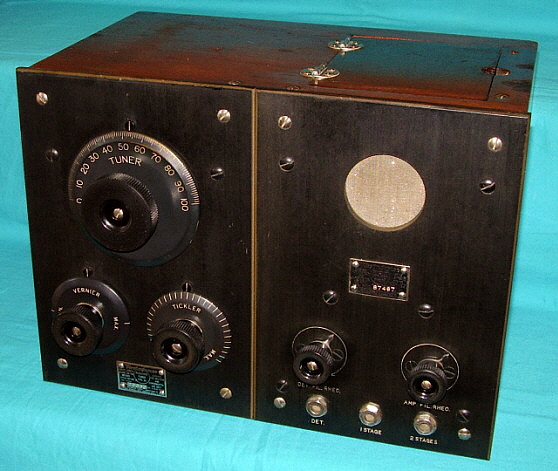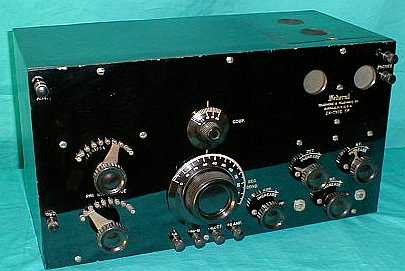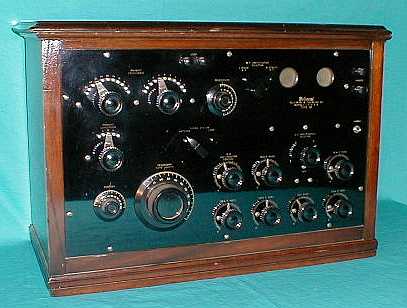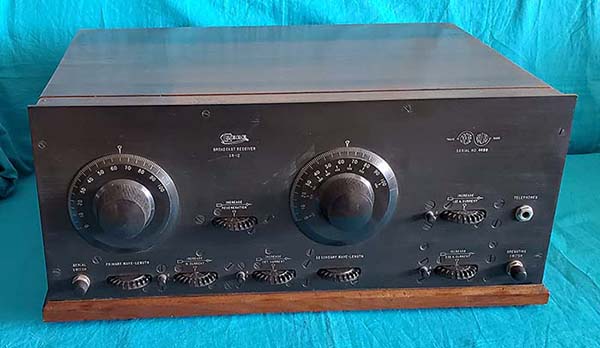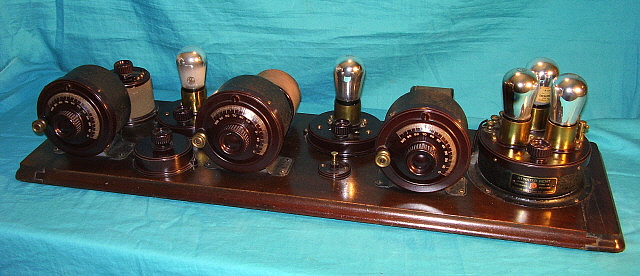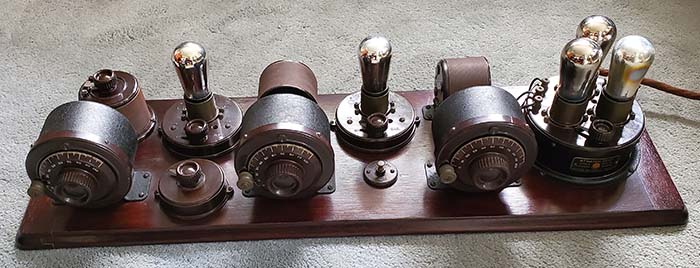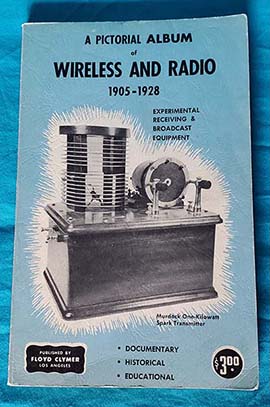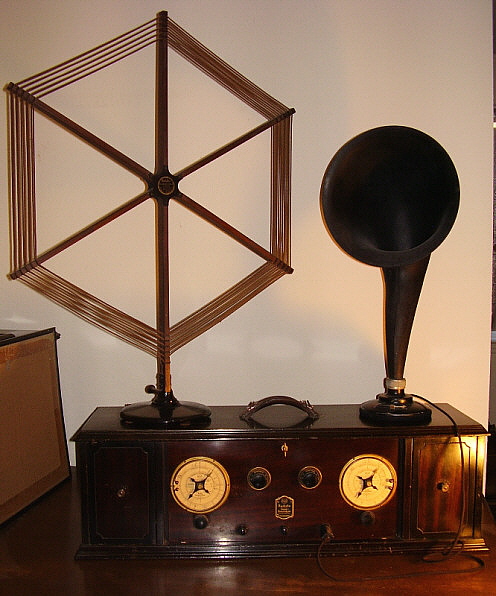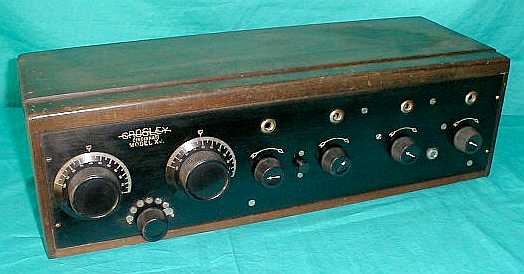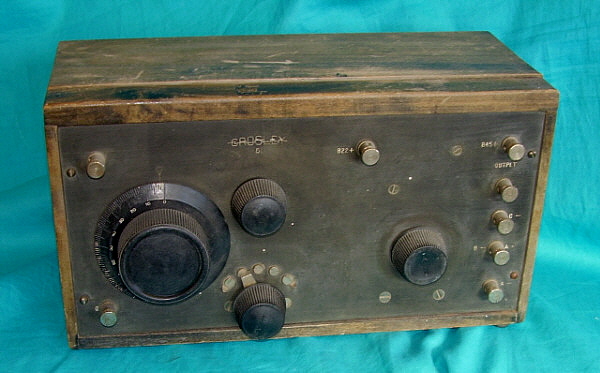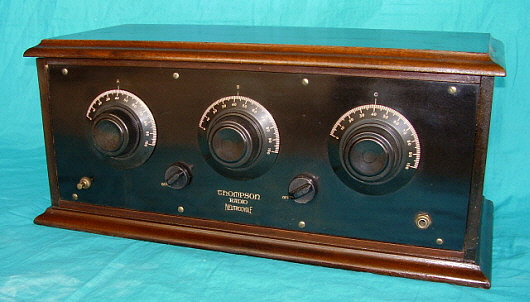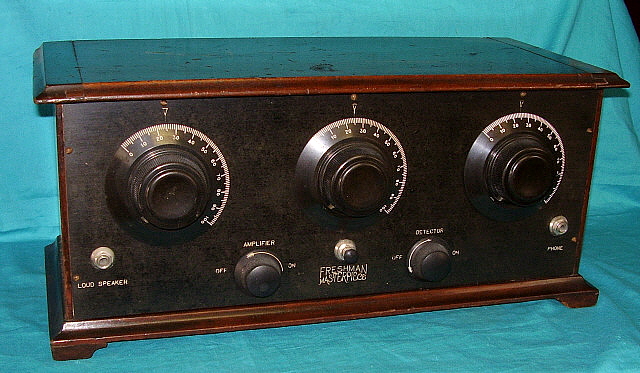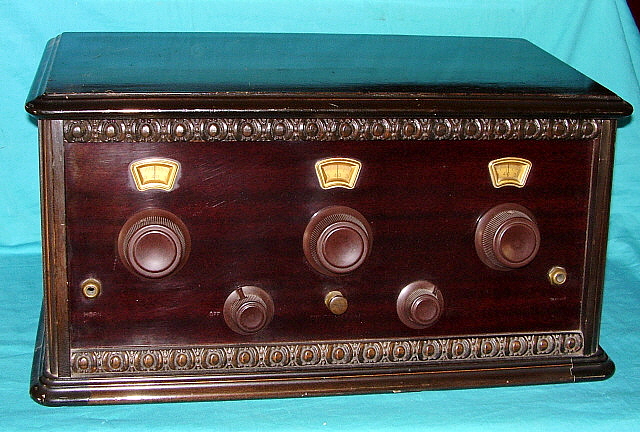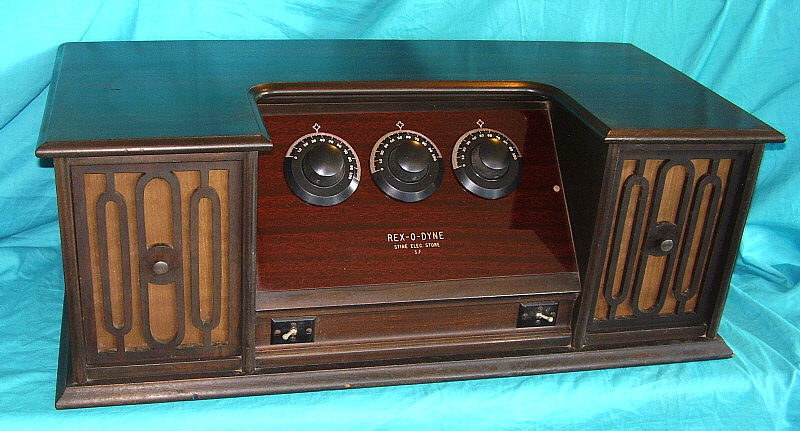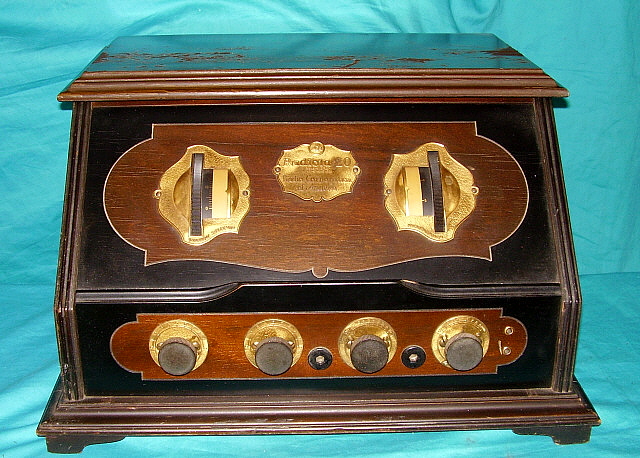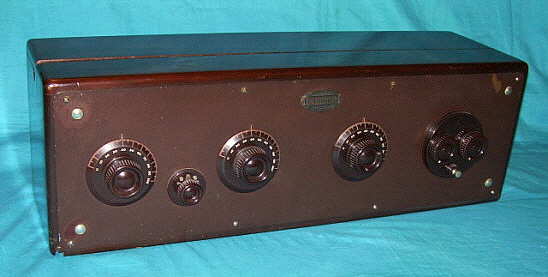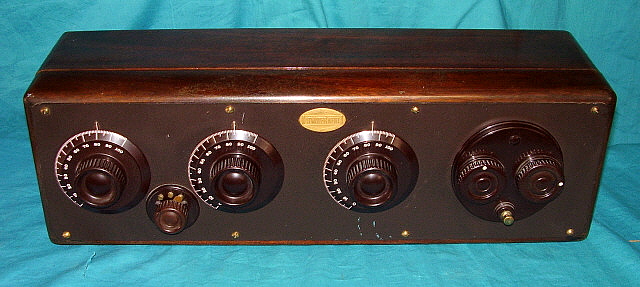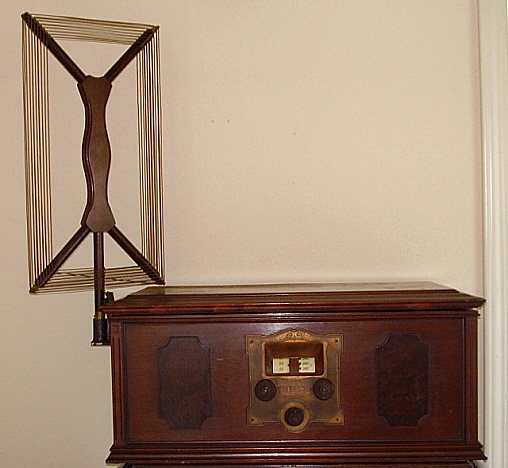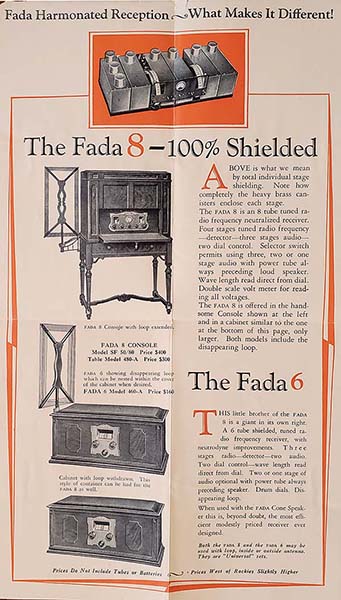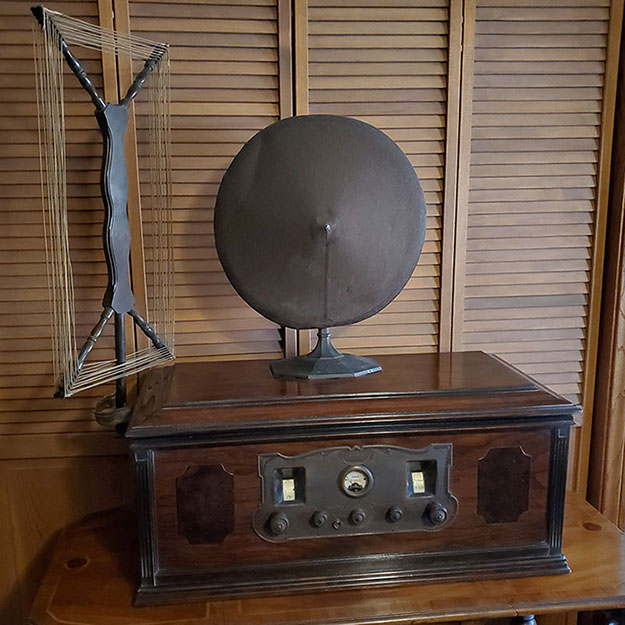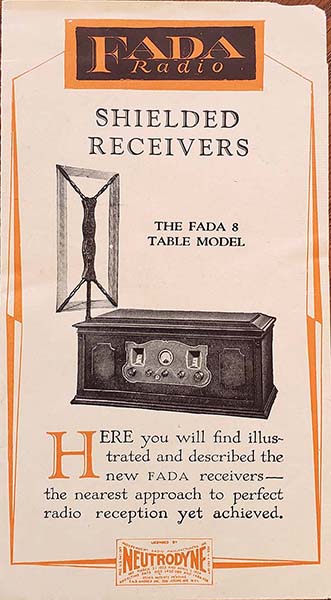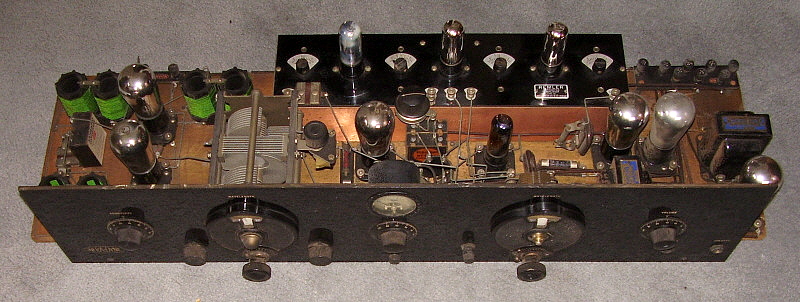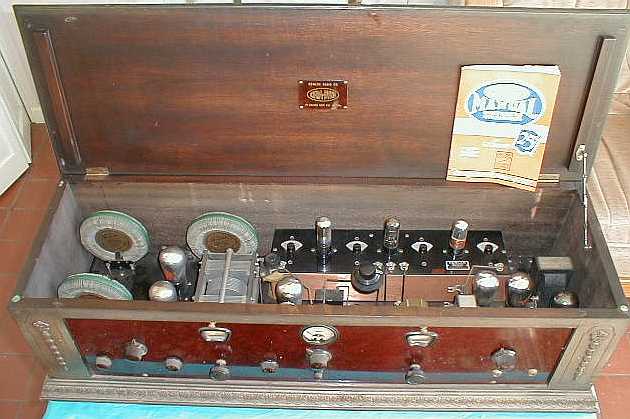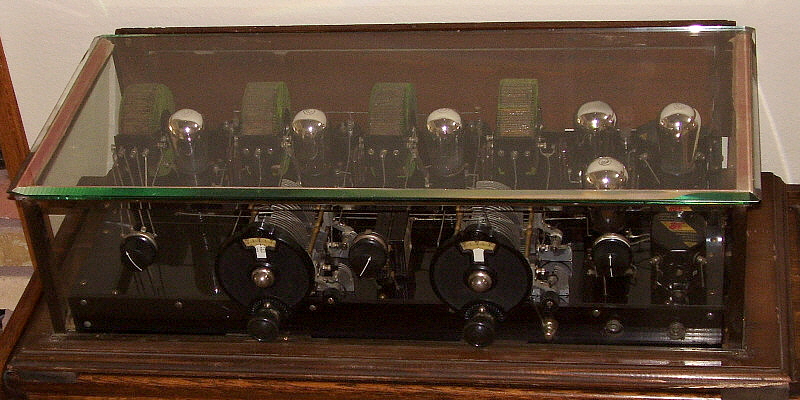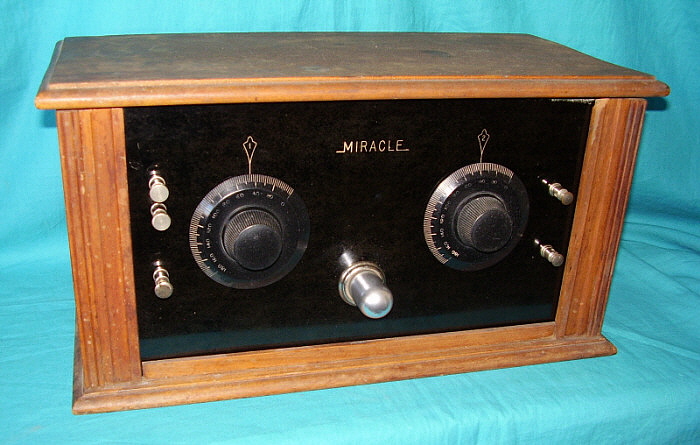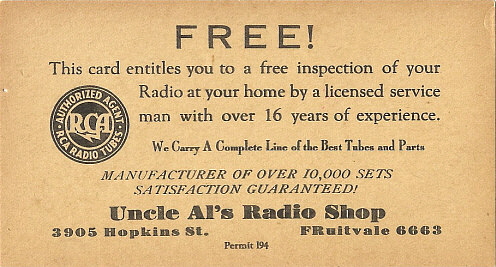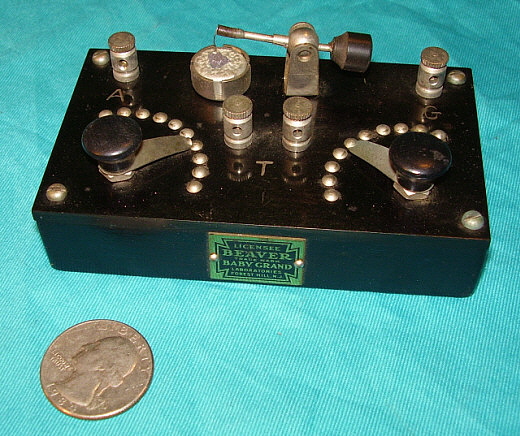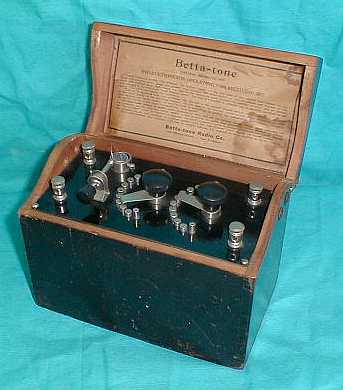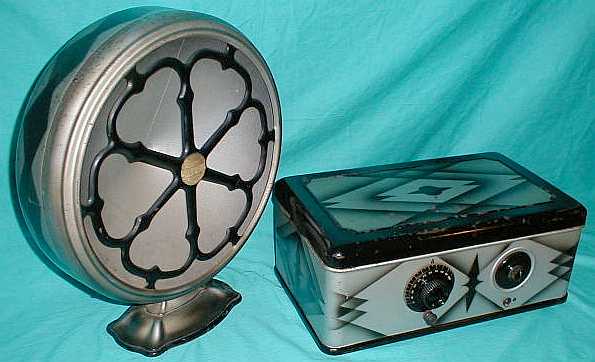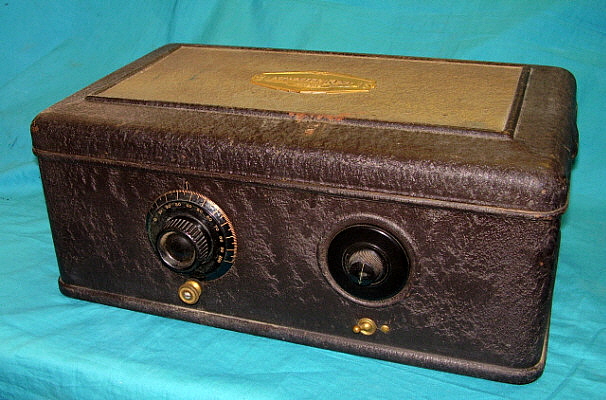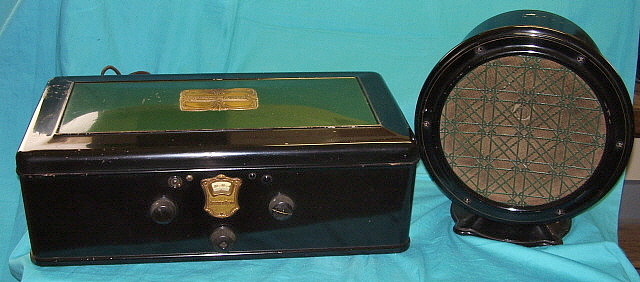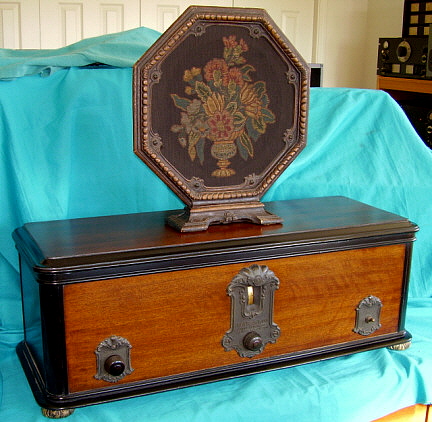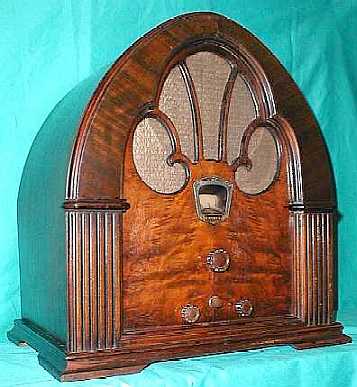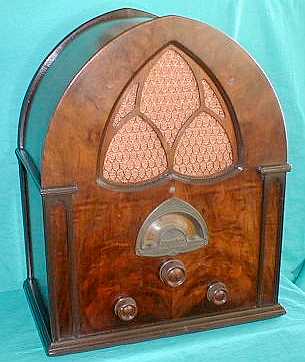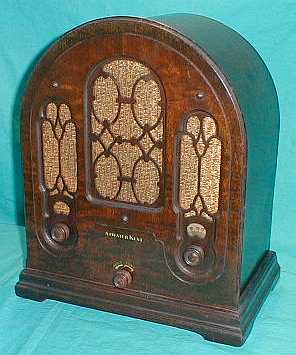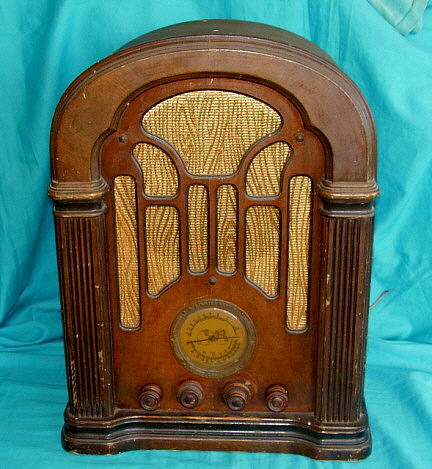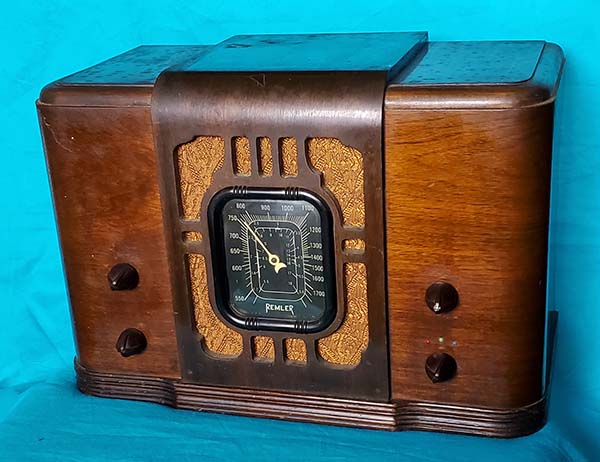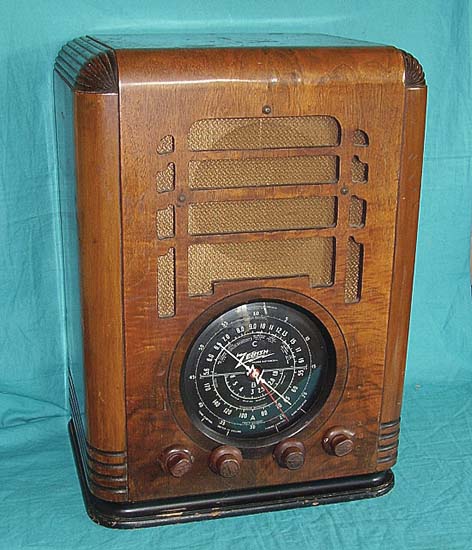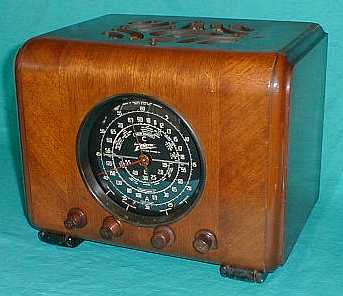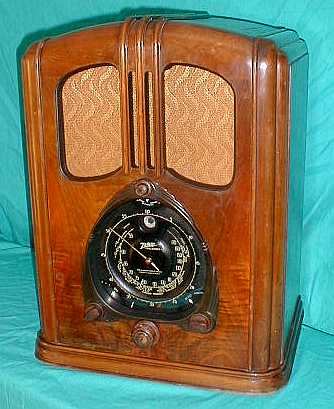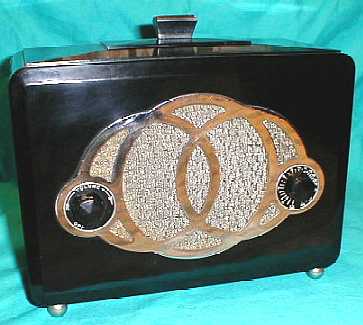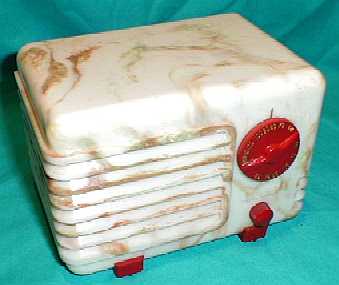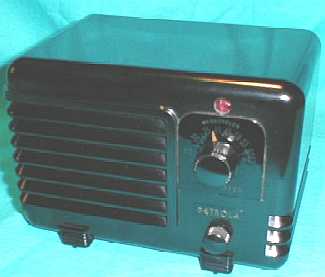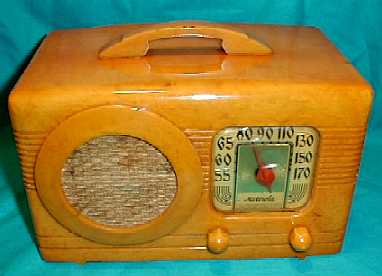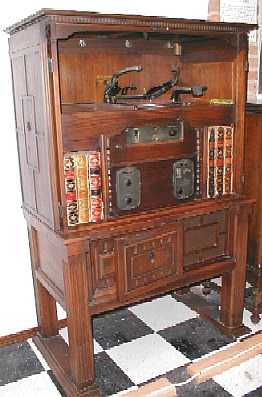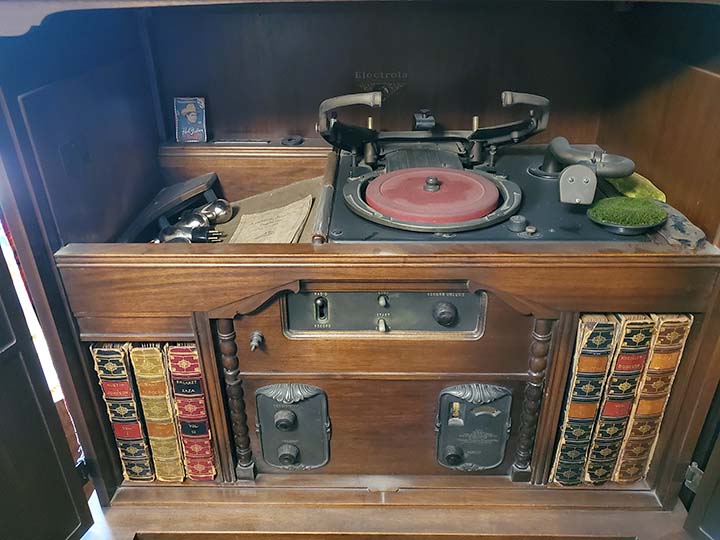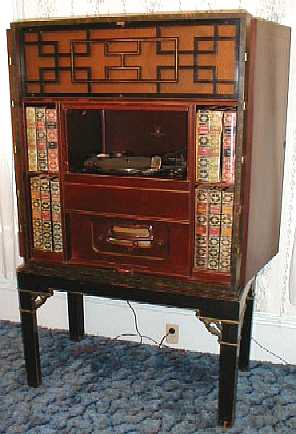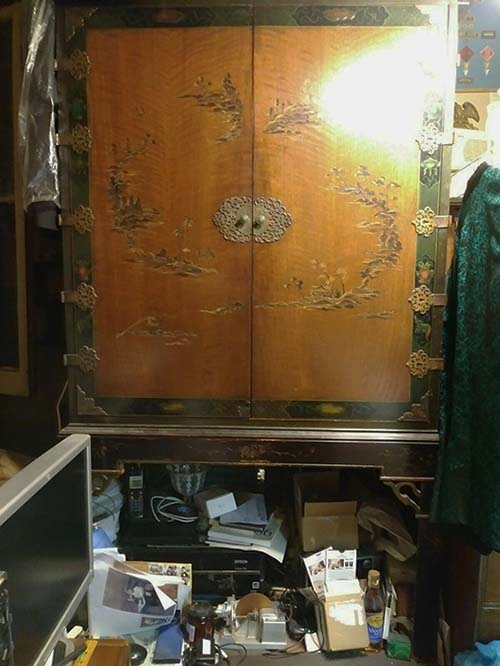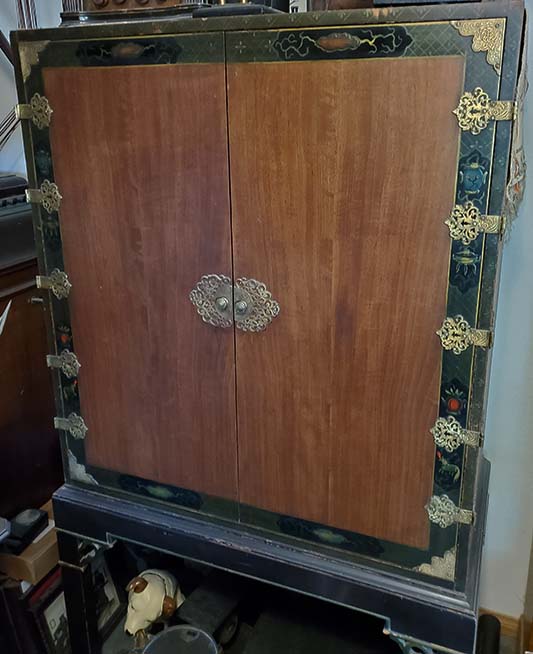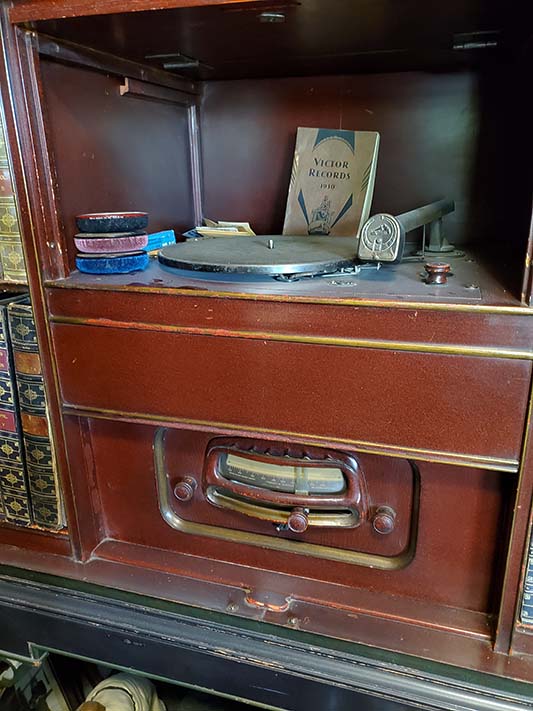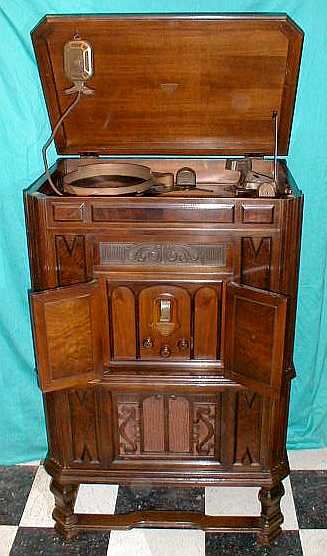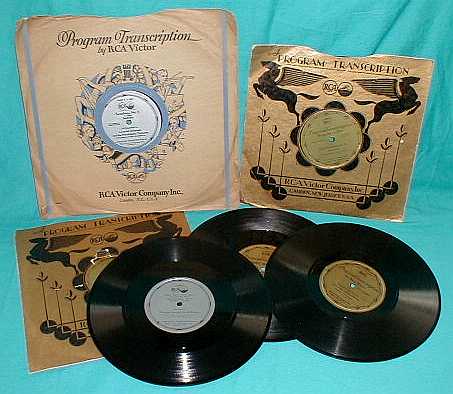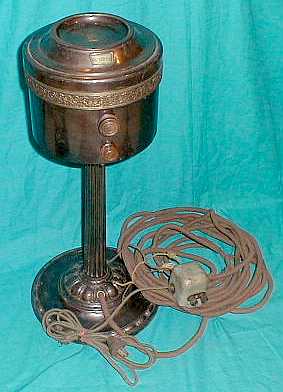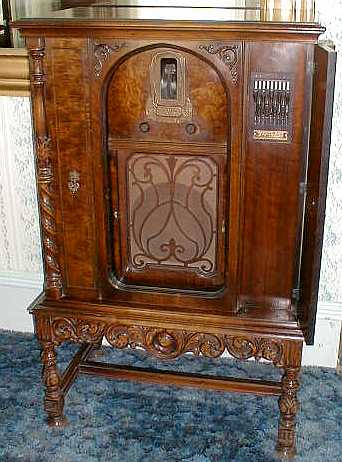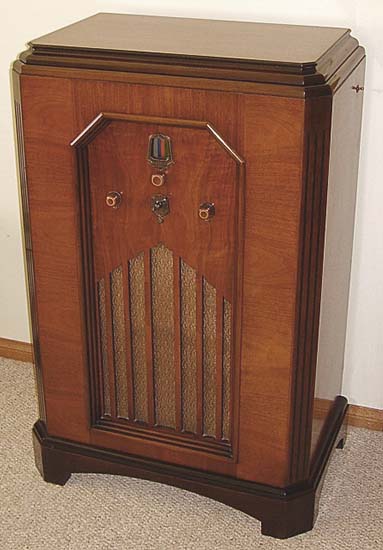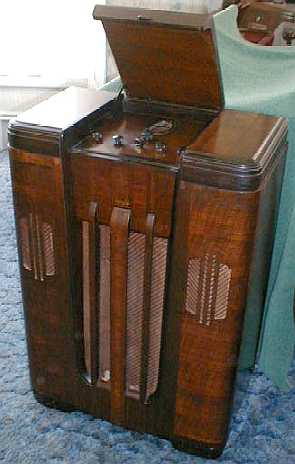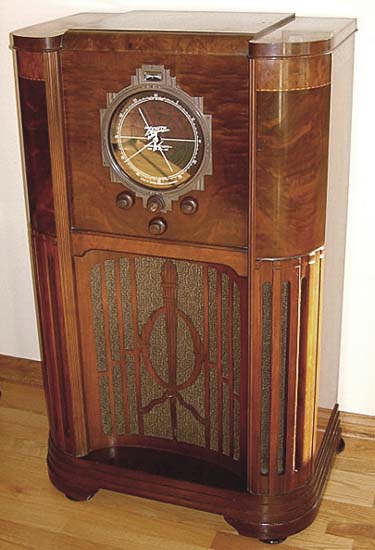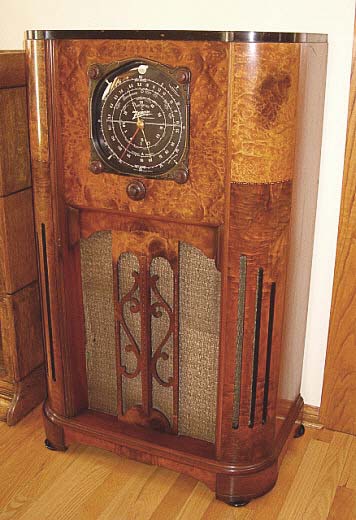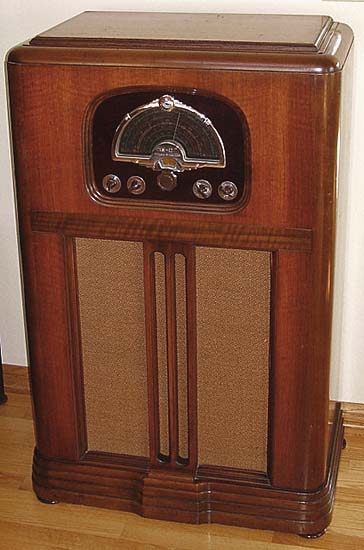|
A mid-1926 upgrade added an improved
audio interstage
transformer that increased the "low frequency" response to improve the sound quality. Also
part of the 1926 upgrade was changing the audio
output tube to a UX-112A, requiring an increased B+ of
+135vdc and an increase in the -C bias to the audio output tube to
-9vdc. Additionally, the "TONE COLOR" control was changed to a
selectable capacitance that shunted the 2AF audio grid to -C. Somewhat
after the mid-1926 upgrade a cushioned detector socket was added and,
shortly after that, all of the sockets were changed to the cushioned-type. There
were no other upgrades after the mid-1926 changes and the MU-1 continued
in production until around April-May of 1927. Throughout production there were minor
changes to the hardware and assembly, e.g., some sets are found with two
lid props and some with just one. Additionally, the dial escutcheons
were usually finished in lacquered gold but supposedly some MU-1s had gold-plated
escutcheons. Front panels will be found with either linear faux graining
or burl (mottled) faux graining. The instruction cards are found in various colors, cream
with black letters, yellow with black letters and cream with red
letters depending on the vintage of the set. To this day, Grebe's serializing of the Synchrophase remains a
mystery. The
serialized identification consists of four letters, e.g., "TFZH" or "BWDC",
etc. - the letters were not chronologically arranged and defy any sort
of decoding. It seems likely that the intent was to obfuscate the actual
number of MU-1 receivers being built (at least by serial number
inference) since that total built quantity might
have figured in a settlement in the pending Neutrodyne suit. Included with the purchase of a new Grebe MU-1 were "Dr. Mu"
QSL cards that allowed users to send reception reports to broadcast
stations they received on their MU-1 (in the hopes of receiving a return
reply QSL card from the BC station.) "Dr. Mu" was an advertising
character that Grebe created - a fictitious ancient Chinese philosopher-scientist. "Mu" refers to µ or mu, the
gain of a vacuum tube.
There was also an MU-2
available that was a dry-cell tube version initially using six UV-199 tubes.
Later versions used four UV-199 tubes and one UX-120 tube. Another
option was a Battery Base that the Synchrophase would set on top of. The
Battery Base was designed for the 1924 version of the Synchrophase
that used four +22.5vdc B batteries. By mid-1925, two large +45vdc B
batteries were now specified and these wouldn't fit into the Battery
Base due to their height. Owners could still operate their 1925 set on
the four +22.5vdc B batteries since the voltage requirements hadn't
changed. When the 1926 version added the UX-112 tube with +135vdc B
voltage the set now required three large +45vdc B batteries (beside two C
batteries) and there was no way to fit all of the batteries in the
Battery Base. However, by 1926, there were smaller +45vdc B batteries
available that would fit into the base but their useful life was much
shorter than the larger B batteries. Around this time, the Battery Base
was rapidly loosing any desirability as an option. Due to the later
battery requirements, most original Synchrophase and Battery Base
combinations that turn up are the earlier 1924 to mid-1925 versions. Note that the
cabinet feet must be removed from the Synchrophase cabinet in order for
it to set flush into the Battery Box recessed area.
The court case regarding the Neutrodyne
Patent infringement was heard in June, 1927. Grebe lost the case but was
able to obtain a Neutrodyne license almost immediately. However by this time the MU-1 was
obsolete and Grebe production was moving to single-dial receivers, the Synchrophase AC-6 and later the AC operated AC-7. The Synchrophase MU-1
production had run from mid-1924 up to mid-1927 and an incredible
150,000 receivers had been produced during that time.
On an additional note: Some Synchrophases will be found with a
greenish-gray color to the finish (as seen in the top photo.) This is a reaction that the original
finish has with excessive exposure to sunlight (UV.) The original finish
was medium walnut color (as seen in the lower photo.)
For the ultimate
information source on the Grebe Synchrophase MU-1, including
chronological listing of engineering-production upgrades, restoration
hints and neutralizing the MU-1, go to "A Guide to the Synchrophase
MU-1." Link below in Navigation Index. |
|
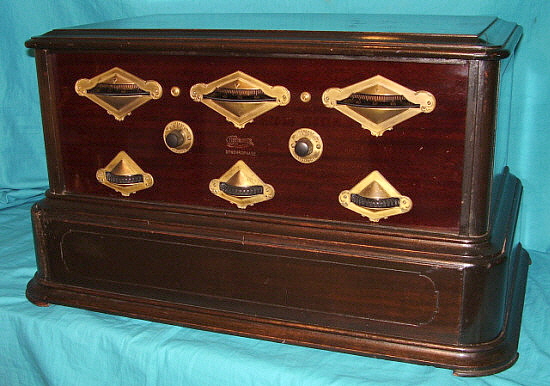
photo above: Grebe MU-1 CTPB with optional Battery Box. This MU-1 does not have the
chain drive and has the "VOLUME" and "FILAMENTS"
controls - no "TONE COLOR" control.
|
|
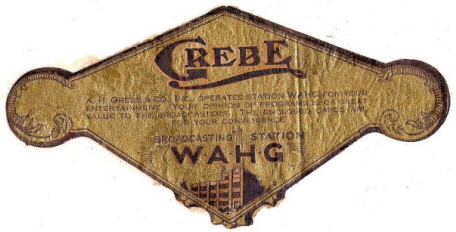
photo above: This advertising label was installed
inside the cabinet wall on the right side. This label
advertises Grebe's Broadcast Station WAHG and also
mentions the packet of Grebe QSL cards that were
supplied with each receiver.
|
|
